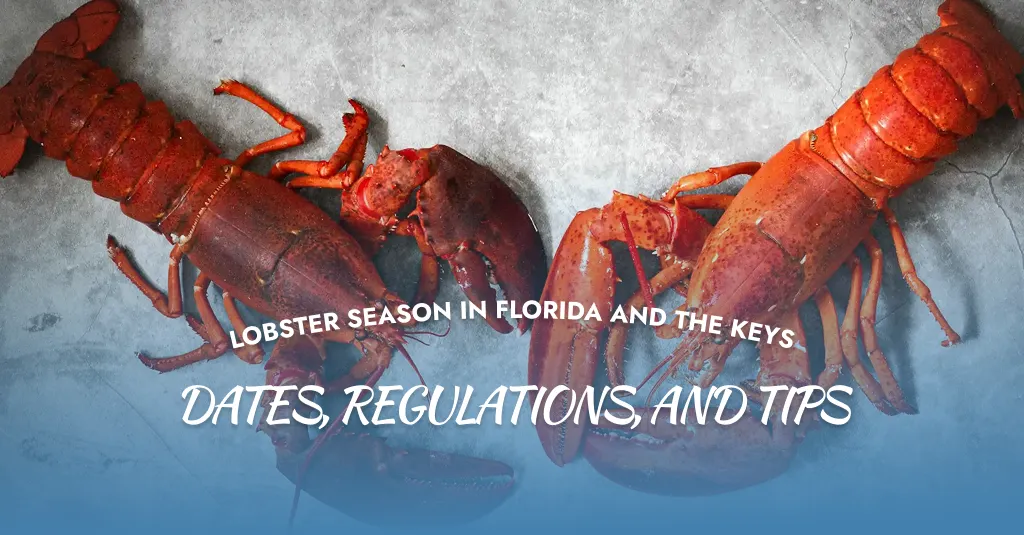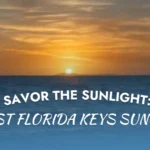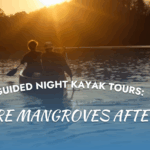
Lobster Season in Florida and the Keys: Dates, Regulations, and Tips
If you’re dreaming of crystal-clear waters, sunny skies, and the thrill of diving for spiny lobsters, Florida has you covered. Lobster season in Florida and the Keys is a highly anticipated time of year for locals and tourists alike, offering both a recreational challenge and a delicious reward.
But before you grab your gear and jump in, it’s crucial to understand the official season dates, legal regulations, and best practices to ensure you enjoy a safe, legal, and sustainable lobster hunt.
In this complete guide, we’ll break down everything you need to know about lobster season in Florida and the Florida Keys from mini-season details to tips for locating lobsters, and how to avoid hefty fines.
What is Lobster Season in Florida?
Florida’s waters are home to the Caribbean spiny lobster, also known as Panulirus argus. These lobsters are different from Maine lobsters they don’t have large claws but are prized for their sweet, tender tail meat.
Each year, the Florida Fish and Wildlife Conservation Commission (FWC) manages a lobster season to protect the species and give enthusiasts a window to catch them responsibly.
Florida Lobster Season Dates
There are two main parts to lobster season in Florida:
1. Lobster Mini-Season (Sports Season)
-
Dates: Last consecutive Wednesday and Thursday in July.
-
Duration: 2 days only.
-
Purpose: Gives recreational divers early access before the commercial season begins.
-
Key Areas: Florida Keys, Key West, Biscayne Bay, and Southeast Florida coastlines.
This short season is very popular, often referred to as the “bug hunt,” and brings thousands of divers to the Keys for a lobster-catching adventure.
2. Regular Lobster Season
-
Dates: August 6 through March 31 every year.
-
Who Can Participate: Both recreational and commercial fishers.
-
Best Months: Late August through October, when waters are warm and lobsters are abundant.
Lobster Catching Regulations You Must Know
Lobster season comes with strict regulations to ensure the population remains healthy and sustainable. Violating these rules can result in fines, arrest, or license suspension.
Here are the most important regulations you must follow:
Licensing Requirements
-
All recreational lobster catchers must have a Florida Saltwater Fishing License.
-
You also need a Lobster Permit (Spiny Lobster Stamp).
Available online via the FWC website or at most bait and tackle shops.
Daily Bag Limits
-
Mini-Season Limit:
-
6 lobsters per person per day in Monroe County and Biscayne National Park.
-
12 per person per day in the rest of Florida.
-
-
Regular Season Limit:
-
6 lobsters per person per day statewide.
-
Minimum Size Requirement
-
Lobsters must have a carapace (head shell) longer than 3 inches.
-
Measure in the water before removing them.
Using a lobster gauge tool is required. Undersized lobsters must be released immediately.
No Egg-Bearing Females
If you catch a female lobster carrying eggs (visible as bright orange or brown clusters under the tail), it’s illegal to harvest her. Release gently and immediately.
Restricted Areas
Certain zones are off-limits, especially during mini-season:
-
John Pennekamp Coral Reef State Park.
-
Dry Tortugas National Park.
-
Sanctuary Preservation Areas (SPAs) in the Florida Keys National Marine Sanctuary.
-
Artificial reefs and shipwrecks in certain counties.
Always check local maps and signage before diving.
Best Equipment for Lobstering
To make the most of lobster season in Florida and the Keys, gear up with the right tools:
-
Snorkel or SCUBA gear.
-
Tickle stick – used to coax lobsters from crevices.
-
Lobster net – to catch them after they move.
-
Measuring gauge – ensures legal size.
-
Catch bag – mesh bag for holding lobsters.
-
Gloves – spiny lobsters have sharp projections.
-
Dive flag – required by law to alert nearby boats to divers in the water.
Best Spots to Catch Lobster in Florida
Wondering where to find the most lobsters? These hotspots rarely disappoint:
Florida Keys (Key Largo, Islamorada, Marathon, Key West)
This area is lobster central during both seasons. Reef systems and coral heads are ideal hunting grounds.
Biscayne National Park
Great for mini-season (check zones). Clear waters and abundant reefs.
Fort Lauderdale and Miami Beach
Urban diving with strong populations around artificial reefs and bridges.
West Coast of Florida
Less crowded than the East, but also more challenging due to murkier water.
Pro Tips for a Successful and Safe Lobster Hunt
Whether you’re new to lobster diving or a seasoned pro, these expert tips will help maximize your success:
1. Scout Before the Season
If possible, visit your target areas before the season opens to find good spots.
2. Start Early in the Morning
Lobsters are most active around dawn and dusk. Beat the crowd by diving at sunrise.
3. Stay Within Your Limits
Don’t dive deeper than you’re trained or equipped to handle. Safety comes first.
4. Respect Coral and Marine Life
Don’t damage coral reefs or harass marine animals. It’s illegal and environmentally harmful.
5. Mark Your Dive Area
Use a dive flag attached to a float and stay within 300 feet of it in open waters.
6. Learn Lobster Behavior
Spiny lobsters hide under ledges and in holes. Use a tickle stick to gently coax them out, never grab with bare hands.
Safety Tips to Avoid Accidents
Lobstering can be fun, but also risky without the right precautions:
-
Never dive alone.
-
Stay hydrated and rest often.
-
Check weather and tides before diving.
-
Watch for boat traffic.
-
Avoid overexertion and monitor your air supply if SCUBA diving.
-
Keep a first aid kit and emergency contacts on your boat.
Bonus Tip: File a float plan before you head out, let someone know where you’re going and when you’ll return.
Why Follow the Rules?
Following regulations isn’t just about avoiding tickets it’s about protecting Florida’s marine ecosystem. Overharvesting or illegal behavior threatens future seasons, coral reef health, and tourism.
Sustainable lobster fishing supports:
-
Long-term recreation opportunities.
-
Thriving local fisheries.
-
A healthy underwater ecosystem.
Do your part, and encourage others to respect the laws too.
Lobster Recipes to Try After the Catch
After a successful day on the water, reward yourself with a fresh lobster dinner. Here are a few Florida Keys favorites:
-
Grilled Spiny Lobster Tails with garlic butter.
-
Lobster Ceviche with lime, cilantro, and onion.
-
Lobster Pasta with a spicy tomato cream sauce.
-
Lobster Tacos with mango salsa.
-
Fried Lobster Bites the perfect appetizer with Key lime aioli.
Just remember to keep the tails chilled and clean your catch legally at designated areas.
What to Remember
Here’s a quick checklist to keep your lobster season enjoyable and legal:
- Know the mini-season and regular season dates.
- Get the proper license and lobster permit.
- Follow size and bag limits.
- Avoid catching egg-bearing females.
- Use the right gear and safety measures.
- Respect marine protected areas.
- Enjoy your catch sustainably.
Lobster season in Florida and the Keys is more than just a tradition it’s a celebrated event that brings together food, fun, family, and respect for the sea.
With a bit of preparation, the right equipment, and adherence to the rules, you can enjoy a safe, satisfying, and sustainable lobstering experience. Whether you’re diving for the first time or it’s your yearly ritual, the Florida waters are ready for you and so are the lobsters!
Frequently Asked Questions (FAQs)
When is lobster season in the Florida Keys?
Mini-season is the last Wednesday and Thursday of July. Regular season runs from August 6 to March 31 every year.
Do I need a license to catch lobster in Florida?
Yes. You need a Florida Saltwater Fishing License and a Spiny Lobster Permit for legal harvesting.
How many lobsters can I keep per day?
During regular season: 6 per person per day. In mini-season: 6 in the Keys, 12 in other areas—unless local rules state otherwise.
Can I lobster at night?
Yes, during regular season. However, night diving is not allowed during the mini-season in Monroe County and Biscayne National Park.
What happens if I catch an undersized lobster?
It must be immediately released unharmed. Failing to do so can result in fines and penalties.





